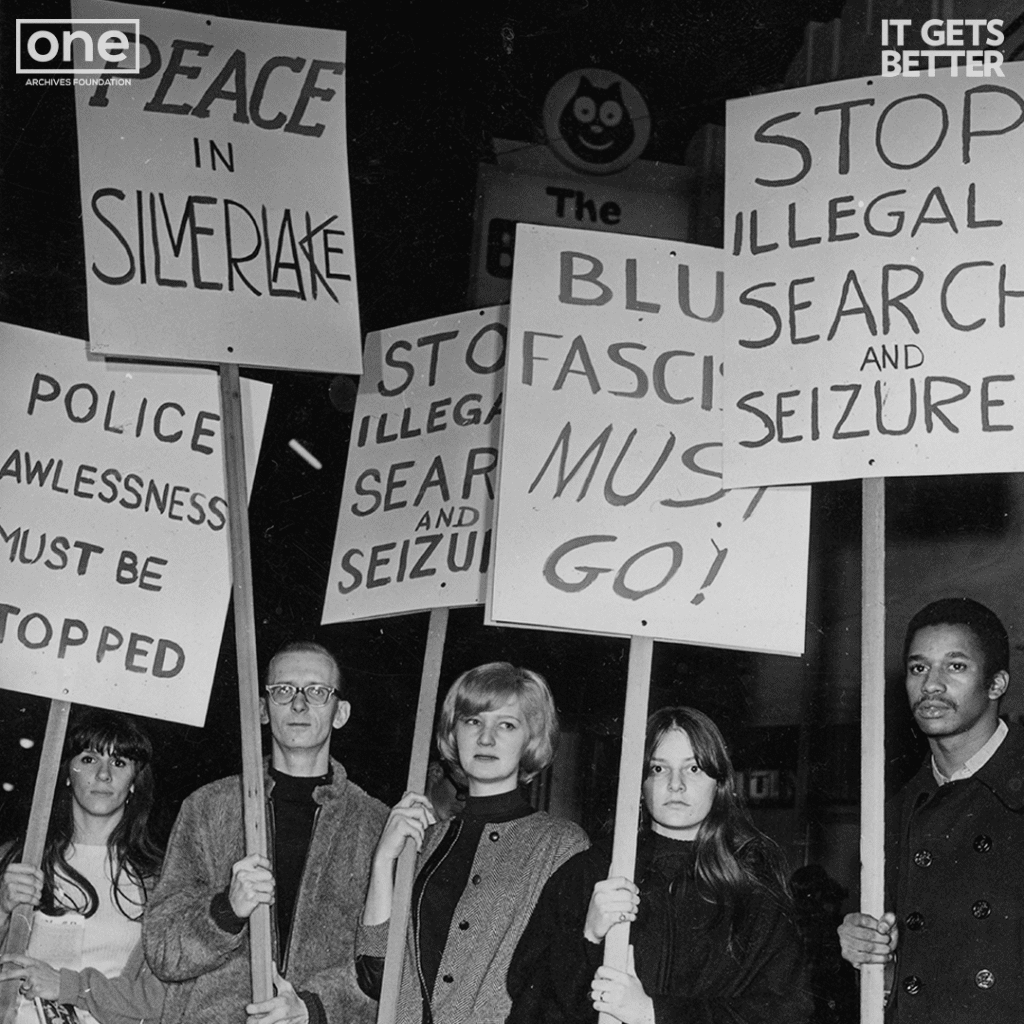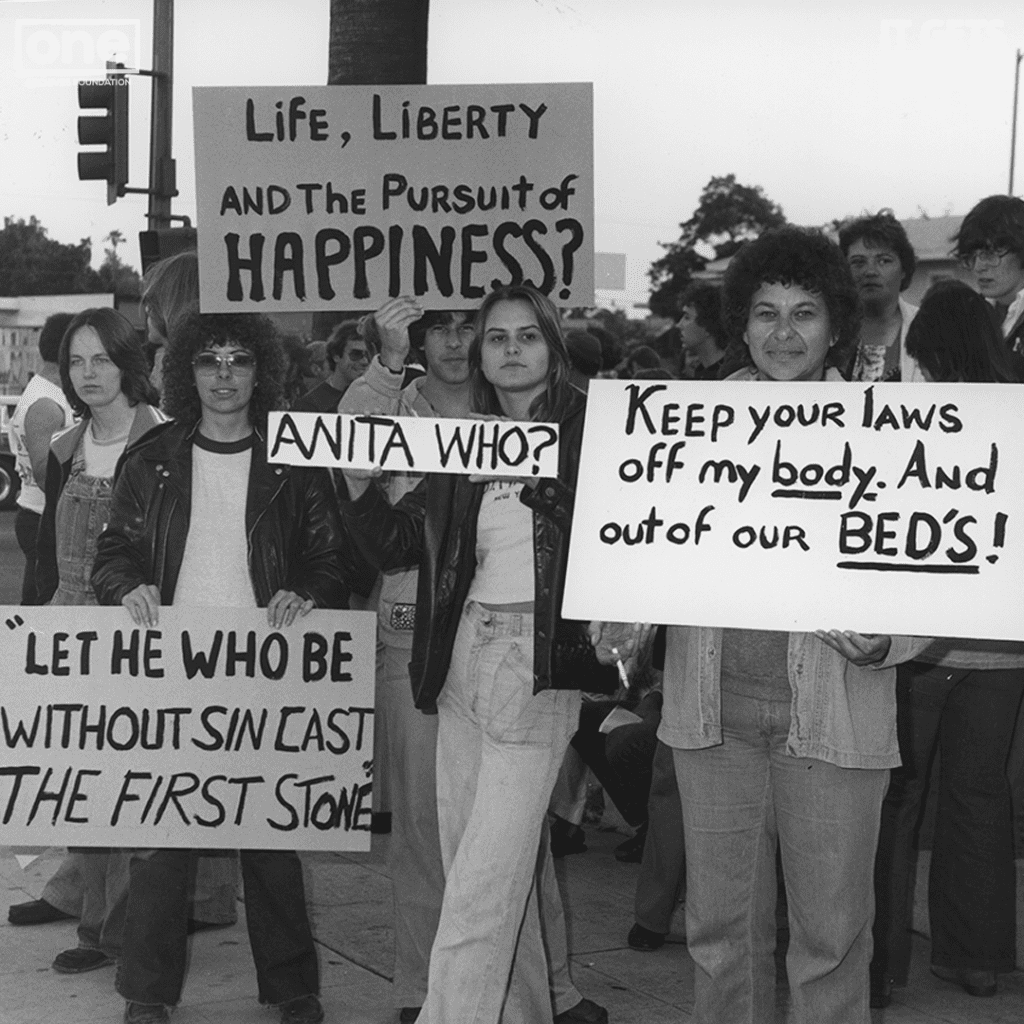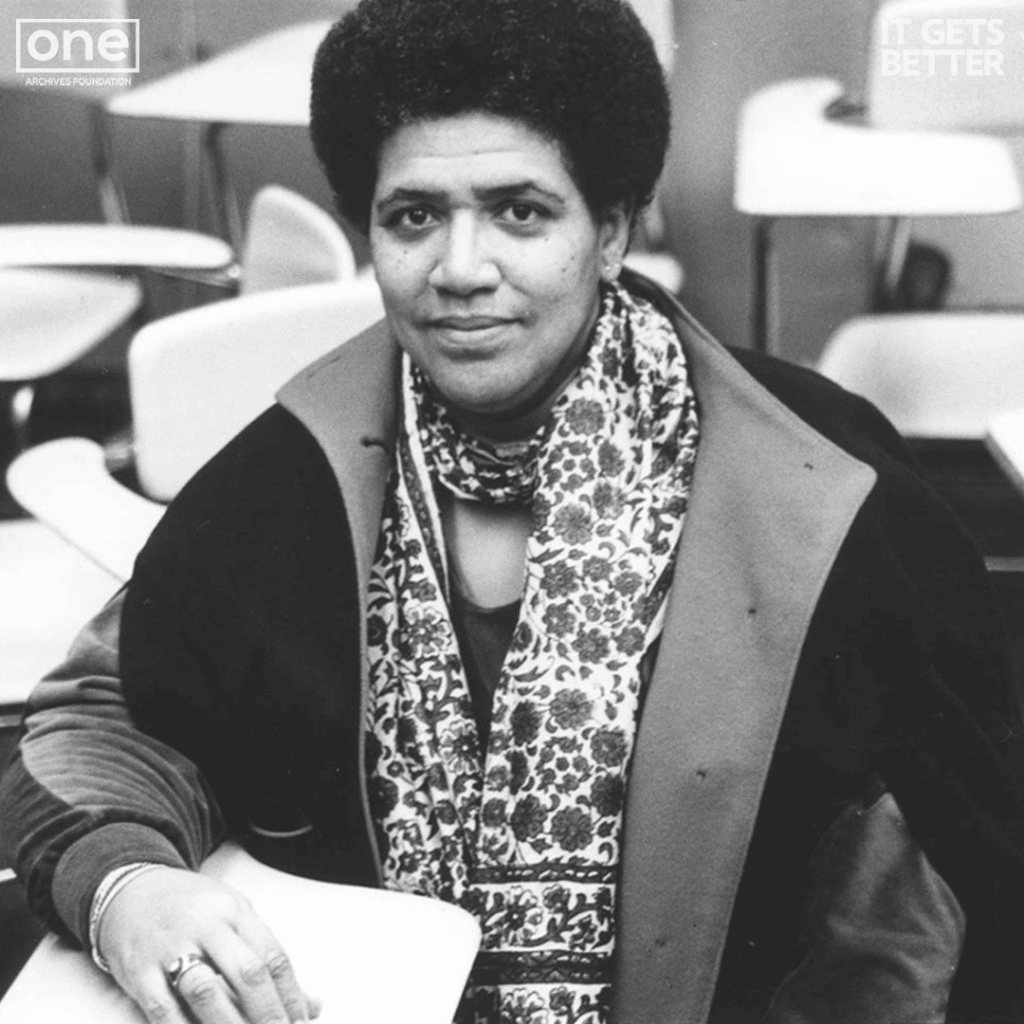Blog Post
Photos From LGBTQ+ History With ONE Archives

October is LGBTQ+ History Month and we thought the best way to celebrate is to give you a peek into our history. We’ve partnered with the ONE Archives Foundation to showcase images that celebrate queer trailblazers and influential events from LGBTQ+ history.
On June 28, 1969, the Stonewall Uprising began; what has been referred to as the start of the modern LGBTQ rights movement would not have happened were it not for transgender women of color, especially Marsha P. Johnson and Sylvia Rivera. In addition to organizing for and participating in the Stonewall Uprising, Johnson and Rivera established Street Transvestite Action Revolutionaries (S.T.A.R.) in 1970. Rivera and Johnson became keenly aware of the need to organize and care for homeless transgender street youth after participating in various anti-police-brutality actions coordinated by emerging queer liberation groups. The group established a radical platform with the goal to end prison injustice, homelessness, and to create a transformative community that challenged the oppressions from gender and sexuality binaries.
Image: Marsha P. Johnson (left) and Sylvia Rivera (right) at a protest with Street Transvestite Action Revolutionaries, the organization they founded in 1970. Drag Magazine, Vol. 2, No. 8. ONE Periodical Collection, ONE Archives at the USC Libraries.

53 years ago, the Black Cat protests were organized in Los Angeles. The Black Cat Riots were a community response to the police brutality LGBTQ patrons experienced when eight undercover officers raided the Black Cat in the Silver Lake neighborhood of Los Angeles on New Year’s Eve. These protests, which preceded the Stonewall Riots by two years, were the largest LGBTQ protests in American history at this point. The riots were organized by P.R.I.D.E. (Personal Rights in Defense and Education) and an estimated 300-600 people took part in the demonstrations.
Image: Black Cat demonstration, c. 1967. Advocate Records, ONE Archives at the USC Libraries.

Anita Bryant—a singer and former beauty pageant contestant—was an outspoken opponent of LGBTQ rights in the United States. She openly supported repealing protections against sexual orientation discrimination in multiple states, and was an outspoken supporter of California’s unsuccessful Briggs Initiative (1978), which would have banned LGBTQ people from working in K–12 schools. The photo depicts people protesting at a Stop Anita Bryant Demonstration at Hollywood High School in 1977.
Image: Stop Anita Demonstration, c. June 1977. Pat Rocco Photographs & Papers, #ONEArchives at the USC Libraries. Pat Rocco, Photographer.

A pioneer of intersectionality, poet Audre Lorde insisted on recognition of herself as black, feminist, and lesbian. After completing a degree in library science, Lorde went on to lecture, teach at several universities, write volumes of poetry, and to co-found the feminist Kitchen Table: Woman of Color Press. In 1978, Lorde was diagnosed with breast cancer and underwent a mastectomy. From this experience, Lorde wrote The Cancer Journals, which narrated her battle with cancer while also commenting on western medicine, its impact on women’s health and identity. From 1991 until her death, she was New York State’s Poet Laureate. “When I dare to be powerful, to use my strength in the service of my vision, then it becomes less and less important whether I am afraid.”
Image: Portrait of Audre Lorde, 1984. Stephen Stewart photographs, ONE Archives at the USC Libraries. Stephen Stewart, Photographer.

Queer Latina activists began organizing in response to the Chicano movement and the White-focused women’s movement in the 1970s. Many organizations came together as a way to address the political underpining of being a double minority, namely being queer/gay and being Latinx. The Latina Lesbians organized in Los Angeles in 1970s. A notable group called Lesbianas Unidas formed in 1984 and helped define a sense of shared identity, engaged in political conversations to address racism, sexism, and homophobia, and created commmunity for its members. Groups like this existed in other parts of to the US and led the intersectional dialogs within the Civil Rights movement.
Image: Lesbianas de Latino America at the Los Angeles Christopher Street West pride parade, 1981. Christopher Street West Association collection, ONE Archives at the USC Libraries.

The photo above is from a candlelight vigil organized by AIDS Project Los Angeles (APLA) in 1983. APLA was born out of an emergency meeting at the Los Angeles Gay and Lesbian Community Services Center (now Los Angeles LGBT Center), establishing a volunteer-run AIDS information hotline, and later, providing support groups, education, and housing programs and much more. Over the decades, many organizations throughout the nation, such as Gay Men’s Health Crisis (founded in 1982), Minority AIDS Project (founded by Rev. Carl Bean in 1985), Asian Pacific AIDS Intervention Team (founded in 1987), AIDS Healthcare Foundation (founded in 1987), AIDS Coalition to Unleash Power (founded in 1987), Bienestar (founded in 1989), and Black AIDS Institute (founded in 1999) have continuously provided HIV/AIDS resources and programs to various communities.
Image: Untitled, c. 1983. Stephen Dotson AIDS Project Los Angeles candlelight vigil photographs, ONE Archives at the USC Libraries. Stephen Dotson, photographer.

